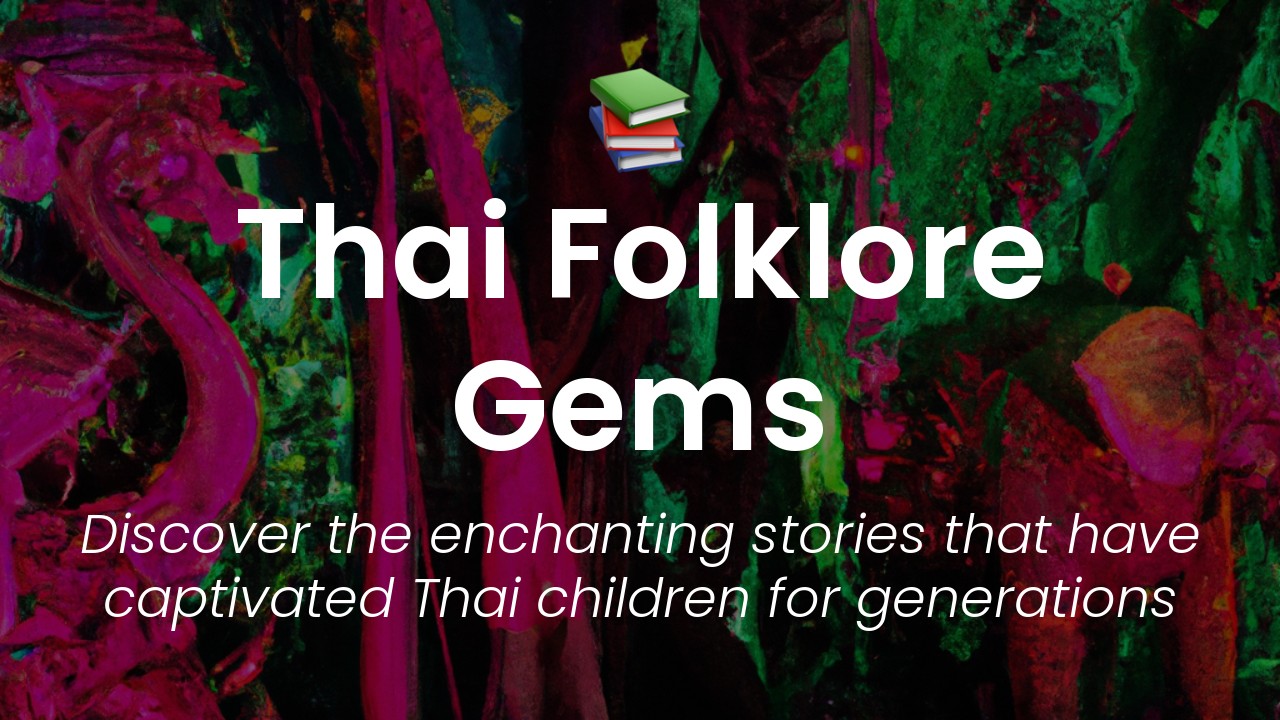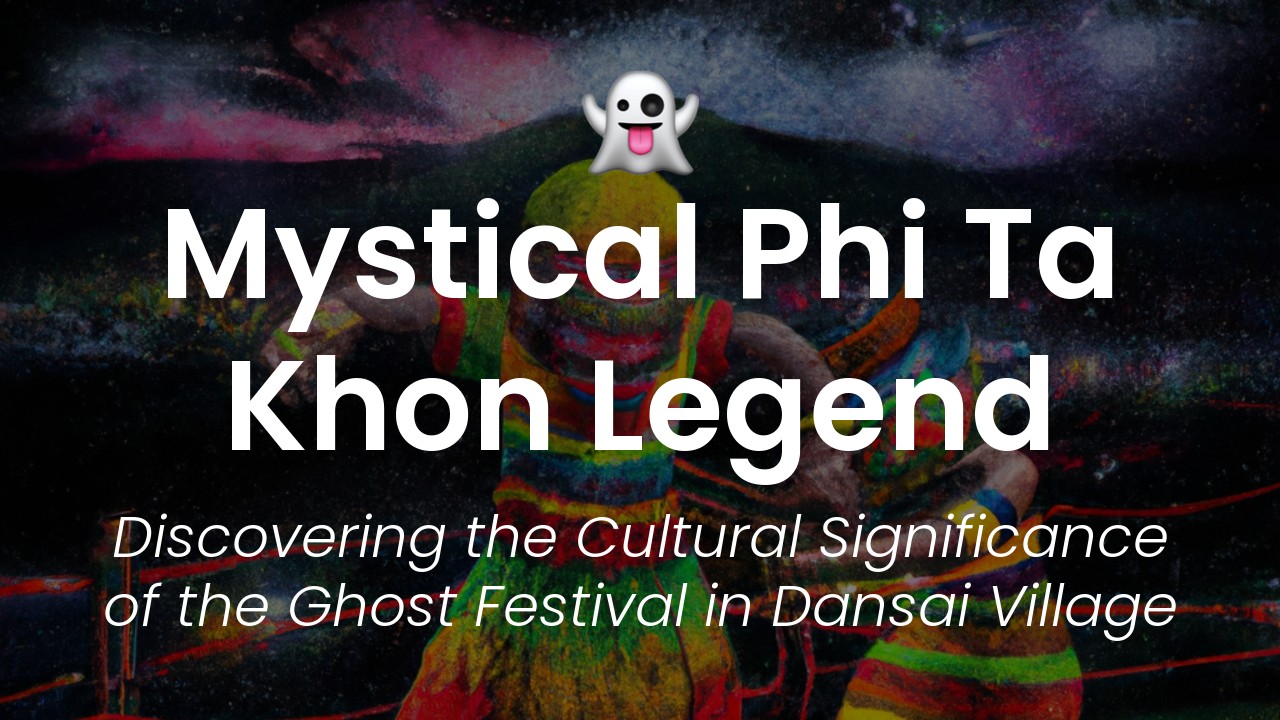Hello everyone, it's Sirinya here, and today I'm excited to take you on a journey through Thailand's fascinating love folklore. As many of you know, Thailand is renowned for its rich cultural heritage, and one of the most alluring aspects of this heritage is its enchanting love stories.
From romantic tales of star-crossed lovers to legends of mythical beasts, Thailand's love folklore offers a glimpse into the country's past, tradition, and way of life. The stories provide meaningful insights into the culture and beliefs of the Thai people, as well as their customs and practices when it comes to love and relationships.
As a Thai woman, I have grown up hearing these stories and learning about the fascinating characters that populate them. I have always been fascinated by the power of storytelling and how it can bring the past to life and transport us to different worlds.
So, in this article, I'd like to share some of my favorite love folklore stories from Thailand. We'll explore the legends behind some of Thailand's most famous love stories, delve into the customs and practices of dating and marriage, and gain a deeper understanding of the cultural heritage of Thailand when it comes to matters of the heart. So, let's dive in!
The legend of Nang Kwak, the patron of commerce
In Thailand, it's not uncommon to see a small statue or image of a smiling woman with a hand raised, seated at a table or counter. This figure, known as Nang Kwak, is believed to bring good luck and prosperity to those who offer her offerings and veneration.
Nang Kwak is the patron saint of merchants and commerce, and her story is one of both tragedy and triumph. According to legend, Nang Kwak was a beautiful and virtuous young girl who lived in a small village. She was known for her kindness and generosity, and would often help the poor and needy in her community.
One day, a rich merchant passing through the village saw Nang Kwak and was immediately smitten with her. He offered to marry her and take her away from the village to live a life of luxury. However, Nang Kwak refused him, saying that she was devoted to her community and would never leave them behind.
The merchant was furious and vowed to ruin Nang Kwak's life. He spread rumors that she was a prostitute and had been sleeping with other men, causing her to be shunned and ostracized by her neighbors.
Despite this, Nang Kwak refused to give up. She continued to help those in need and work hard, even as her reputation was destroyed. Eventually, her dedication and good deeds were recognized, and she was appointed as the patron saint of merchants and commerce.
Today, Nang Kwak is often depicted holding a money bag and a golden lotus flower, symbols of wealth and prosperity in Thai culture. She is revered as a role model for businesspeople and entrepreneurs, reminding them to stay true to their values and serve their communities, even in the face of hardship and adversity.
The story of two star-crossed lovers, Mae Nak and Mak
Another popular folklore in Thailand is the story of Mae Nak and Mak, two lovers who were tragically separated by death.
Mak was a young soldier who fell in love with Mae Nak, a beautiful and kind-hearted woman from a nearby village. They were quickly married and started a happy life together.
However, tragedy struck when Mak was called away to fight in a war. While he was away, Mae Nak became pregnant with their child. But during childbirth, both Mae Nak and the baby died, leaving Mak alone and heartbroken.
Or so he thought. One day, as Mak was walking near his village, he saw his wife sitting at their doorstep, holding their child. Without realizing that she was a ghost, Mak was overjoyed to be reunited with his wife and child.
Mae Nak had died with so much love and devotion for Mak that her spirit remained on earth, unwilling to leave her beloved husband. Despite being a ghost, she continued to take care of her family and be a loving wife to Mak.
However, the villagers soon realized that Mae Nak was not truly alive and warned Mak about the dangers of living with a ghost. Mak refused to listen, convinced that his love for Mae Nak was stronger than any superstition or fear.
Unfortunately, this decision led to tragedy. The villagers, fearing for Mak's safety and sanity, decided to perform an exorcism to remove Mae Nak's ghost from their village. During the exorcism, Mae Nak's ghost became enraged and unleashed her supernatural powers, causing chaos and destruction.
In the end, Mae Nak was finally put to rest, allowing her to move on to the afterlife. Mak, meanwhile, was left alone and heartbroken once again, forever haunted by his memories of Mae Nak's love and devotion.
The myth of Phaya Thaen, the god of rain and fertility
In Thai mythology, Phaya Thaen is the god of rain and fertility. Legend has it that he lives in a heavenly palace surrounded by clouds and rainbows, overseeing the cycle of rain and vegetation on earth.
According to the myth, Phaya Thaen was once a mortal man who had a deep love and respect for the natural world. He would often pray and make offerings to the spirits of the land, asking for blessings and bountiful harvests.
One day, Phaya Thaen's prayers were answered, and he was visited by a powerful spirit who granted him godhood and the ability to control the rain and water. Ever since then, Phaya Thaen became the protector and provider of farmers and agricultural communities.
In Thai culture, Phaya Thaen is often depicted as a benevolent and kindhearted deity, as well as a symbol of the power and importance of nature. Farmers and villagers continue to make offerings and pray to him, asking for rain and fertility, and gratitude for his blessings.
The legend of the Golden Shower Tree and the resident nymph
The Golden Shower Tree is a popular tree species in Thailand known for its striking yellow flowers and wide-spreading canopy. But this tree also has a special significance in Thai folklore, as it is believed to be home to a beautiful and enigmatic nymph.
According to legend, the nymph of the Golden Shower Tree is a goddess of love and beauty who watches over the tree and its surroundings. She is said to be a skilled musician and dancer, often entertaining herself by playing music and dancing among the tree's branches.
The nymph is also a guardian and protector, especially to those who show reverence and respect to the Golden Shower Tree. Those who harm or disrespect the tree are said to incur the wrath of the nymph, leading to bad luck and misfortune.
Today, the Golden Shower Tree remains a popular ornamental plant in Thailand. It is often planted near homes and temples as a symbol of beauty and prosperity, as well as a reminder of the importance of nature and the mysterious forces that exist within it.
The tale of Thao Suranari, the warrior princess of Nakhon Ratchasima
Thao Suranari, also known as Ya Mo in the local dialect, was a legendary figure in Thai history known for her bravery and heroism during a time of war.
At the time, Thailand was under threat from neighboring countries seeking to expand their territory and influence. Thao Suranari, a noblewoman from the city of Nakhon Ratchasima, realized the danger and decided to take action.
She built a fortress around her city, enlisting other women and children to help in its construction. She also trained herself and other women to use weapons and fight, preparing themselves for any attack that might come.
When the enemy finally arrived, Thao Suranari and her army of women fought courageously, repelling the invaders and defending their home. Their bravery and strength inspired others to stand up to the enemy, and soon, the tide of war began to turn.
Thao Suranari became a symbol of hope and resilience, celebrated as a hero and warrior princess for decades to come. Today, a statue of her stands in Nakhon Ratchasima, a reminder of her legacy and the important role that women played in Thailand's history.
The lore of the Kinnaree, half-human half-bird creatures of Thai mythology
In Thai mythology, the Kinnaree are a type of celestial being that are half-human, half-bird. They are known for their beauty, musical talent, and grace, as well as their ability to bring good fortune and prosperity to those who encounter them.
According to legend, the Kinnaree are native to the Himalayas and were once friends and companions of the god Indra. They were said to be so beautiful and captivating that even the gods themselves were enchanted by them.
In Thai culture, the Kinnaree are often depicted as symbols of love, romance, and fertility. They are also associated with the arts, especially music and dance, and are believed to be excellent musicians and performers.
Today, the Kinnaree remain an important part of Thai folklore and culture, inspiring artists, musicians, and writers to create works that celebrate their beauty and mystery. They continue to capture the imagination of both locals and tourists alike, reminding us of the rich and fascinating heritage of Thailand's mythology and folklore.
The history of the Songkran festival, celebrated as Thailand's New Year
Finally, we come to the Songkran festival, one of the most popular and widely celebrated festivals in Thailand. Held annually in April, Songkran marks the beginning of the Thai New Year, as well as a time for spiritual renewal and renewal of family relationships.
The history of the Songkran festival dates back to ancient times, when the country's agricultural communities would celebrate the start of the new planting season. Over time, the festival evolved into a more spiritual and cultural event, celebrated with religious ceremonies, offerings, and performances.
Today, Songkran is best known for its water throwing and splashing, a tradition that symbolizes the washing away of sins and bad luck from the previous year. Crowds of locals and tourists alike flood the streets, armed with buckets, water bottles, and water guns, drenching each other in a joyous display of goodwill and fun.
In addition to the water festivities, the Songkran festival also includes traditional Thai music, dance, and food, as well as street fairs and parades. It is a time for families and friends to reunite and spend time together, as well as a celebration of Thailand's unique cultural heritage and spirit.
In conclusion, Thailand's folklore and mythology are rich and fascinating, full of stories and legends that reflect the country's values, beliefs, and traditions. From the brave warrior princesses to the mythical Kinnaree, these tales continue to inspire and entertain us, reminding us of the enduring power of storytelling and the importance of preserving cultural heritage.







